26th August, 2025
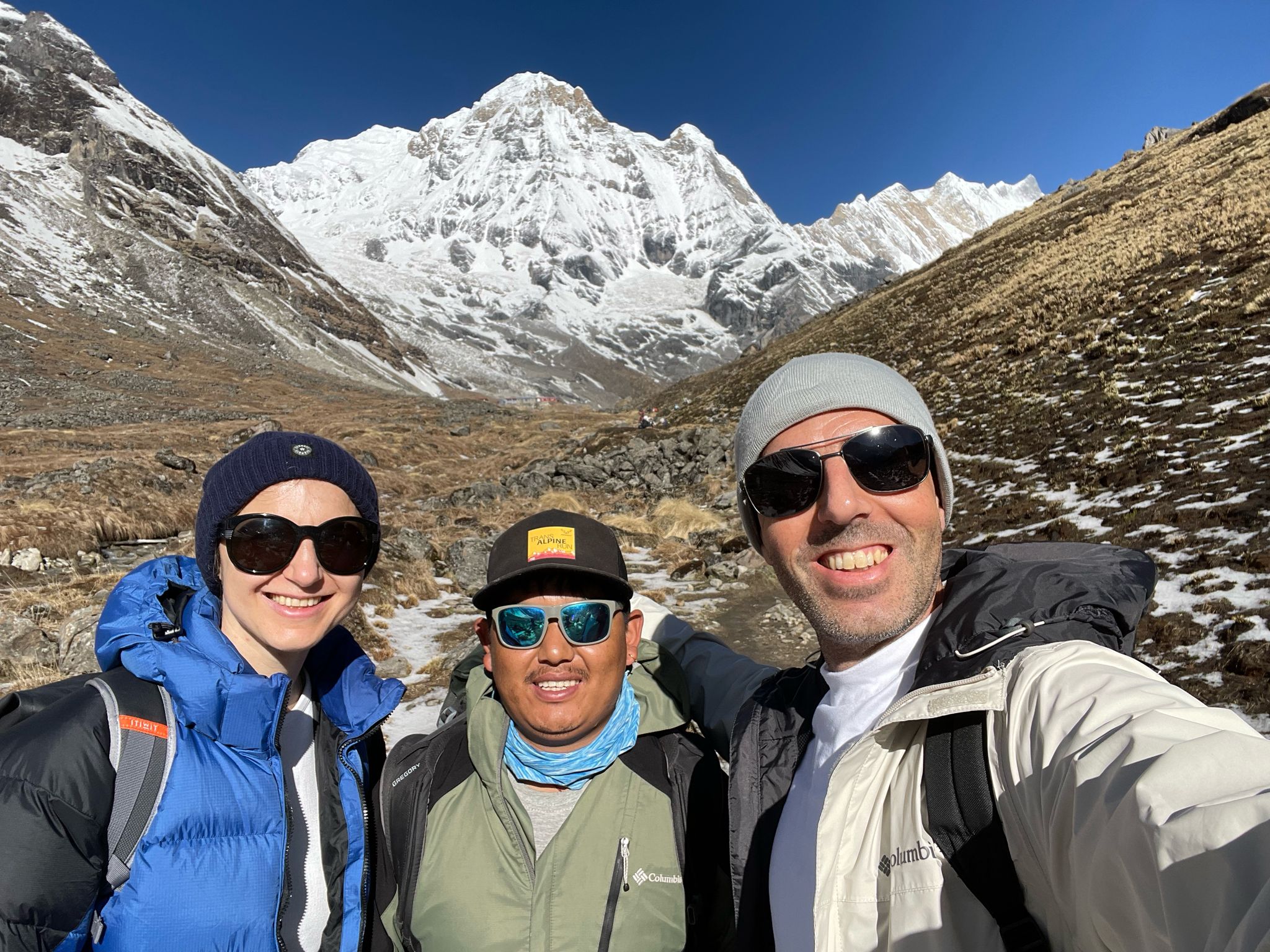
May 24, 2025
How Hard Is Annapurna Base Camp Trek
- Understanding the Difficulty of the Annapurna Base Camp Trek
- Physical Fitness Requirements for Annapurna Base Camp Trek
- The Role of Altitude in Trekking Difficulty
- Weather Impact on Annapurna Base Camp Trek Difficulty
- Mental Strength and Endurance During the Trek
- Trail Conditions and Terrain Challenges
- Acclimatization Strategies for a Safer Trek
- Essential Gear to Manage Trek Difficulty
- Nutrition and Hydration for Optimal Performance
- Safety Measures and Emergency Preparedness
The Annapurna Base Camp trek is often described as a moderately challenging adventure that attracts thousands of trekkers every year from around the world. Many people ask, How hard is the Annapurna Base Camp trek? The answer depends on several factors, including your fitness level, trekking experience, altitude tolerance, and the time of year you choose to embark on this journey.
Physically, the trek demands endurance and stamina because it typically involves walking 5 to 7 hours daily over rough and uneven terrain. The trail covers a variety of landscapes — from lush subtropical forests and terraced fields to rocky slopes and high mountain passes. Trekkers must be prepared for steep ascents and descents, which can be tough on the legs and knees. However, the path is well-marked, and no technical climbing skills are required, making it accessible to those with moderate fitness levels.
One of the biggest challenges that affect the perceived difficulty of the trek is altitude. Annapurna Base Camp sits at an elevation of approximately 4,130 meters (13,550 feet), where oxygen levels are significantly lower than at sea level. This can lead to altitude sickness if proper acclimatization is not followed. The trek includes gradual elevation gain and mandatory rest days, which help the body adjust, but trekkers need to listen carefully to their bodies and move at a comfortable pace to minimize health risks. Symptoms like headaches, dizziness, and nausea can occur, and being well-informed and cautious is key to overcoming these obstacles.
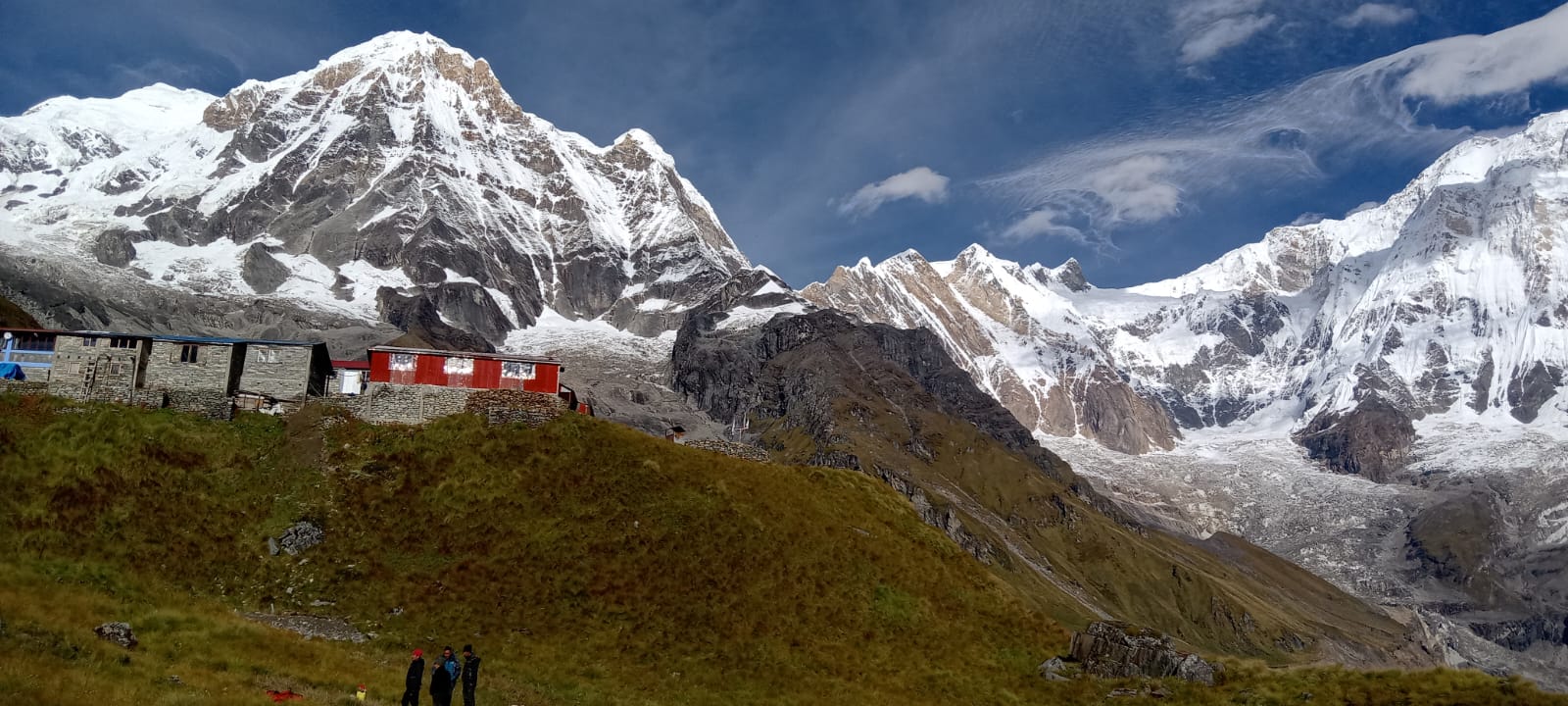
ANNAPURNA BASE CAMP TREK 5 DAYS
Annapurna base camp trek begins from beautiful City Pokhara and this trek is one of the most picturesque regions in Nepal. It offers a perfect mix of natural beauty, cultural wealth and adventure.The...
Another important aspect that influences the difficulty is weather conditions. The best trekking seasons are spring (March to May) and autumn (September to November), when the weather is stable, and visibility is excellent. During these months, temperatures are moderate, making trekking more comfortable. In contrast, the monsoon season brings heavy rainfall, slippery trails, and the risk of landslides, increasing the trek’s difficulty and hazards. Winter can bring snow and freezing temperatures, which may require additional gear and experience to safely navigate icy sections. Preparing for sudden weather changes with proper clothing and equipment helps mitigate these challenges.
Mental toughness is equally important when tackling the Annapurna Base Camp trek. Long walking days, changing weather, and basic lodging conditions can be mentally taxing. Trekking through remote villages and mountainous terrain tests a person’s endurance and resilience. However, the breathtaking panoramic views of the Annapurna massif, the rich local culture, and the sense of achievement upon reaching base camp offer unparalleled motivation.
To make the trek easier, physical preparation is highly recommended. Training that focuses on cardiovascular fitness, leg strength, and endurance can significantly reduce the perceived difficulty. Regular aerobic exercises like running or cycling, combined with hiking practice carrying a weighted backpack, prepare the body for the demands of the trail. Staying hydrated, eating well, and getting enough rest before and during the trek also contribute to better performance.
In conclusion, the Annapurna Base Camp trek is challenging but achievable for those who prepare well physically and mentally, respect altitude acclimatization protocols, and come equipped for variable weather. It offers an unforgettable Himalayan experience that balances natural beauty with cultural richness. Understanding the trek’s challenges ahead of time helps ensure a safe, enjoyable, and rewarding adventure in the Annapurna region.
Understanding the Difficulty of the Annapurna Base Camp Trek
The Annapurna Base Camp trek is widely regarded as a moderately challenging trekking route, ideal for those with some hiking experience and decent fitness levels. Many trekkers wonder, “How hard is the Annapurna Base Camp trek?” The answer depends on several factors such as physical fitness, acclimatization, weather conditions, and mental toughness. The trail covers diverse terrains, including steep ascents, uneven paths, and rocky sections, which require stamina and careful footing. One of the biggest challenges is altitude. The trek reaches an elevation of over 4,000 meters, where oxygen levels are significantly reduced, making breathing more difficult and increasing the risk of altitude sickness. Proper acclimatization and pacing are essential to safely complete the trek. Weather also plays a crucial role; trekking during the dry seasons of spring and autumn offers the best conditions, while the monsoon and winter seasons present additional challenges like slippery trails and freezing temperatures. Preparation through physical training and proper gear selection reduces the difficulty and enhances the experience. Overall, understanding the trek’s challenges helps adventurers plan better and enjoy the stunning Annapurna region safely.
Physical Fitness Requirements for Annapurna Base Camp Trek
Physical fitness is a key factor in determining how hard the Annapurna Base Camp trek will feel. The journey typically involves hiking 5 to 7 hours a day over rough, steep, and uneven terrain, demanding endurance, strength, and balance. Cardiovascular fitness is critical to sustain long days of trekking and cope with the reduced oxygen at high altitude. Strong leg muscles help with continuous climbs and descents, reducing the risk of injuries. Trekking with a weighted backpack requires core stability and good posture. Beginners should start training months ahead, incorporating aerobic exercises like running, cycling, and stair climbing to build endurance. Strength training focusing on legs, core, and balance exercises will prepare muscles for trail conditions. Additionally, practicing hiking on varied terrain while carrying a pack simulates real trek conditions. Proper hydration, nutrition, and rest during training and the trek itself are vital for optimal performance. Being physically prepared not only makes the trek safer but also more enjoyable, allowing trekkers to focus on the breathtaking scenery rather than exhaustion.
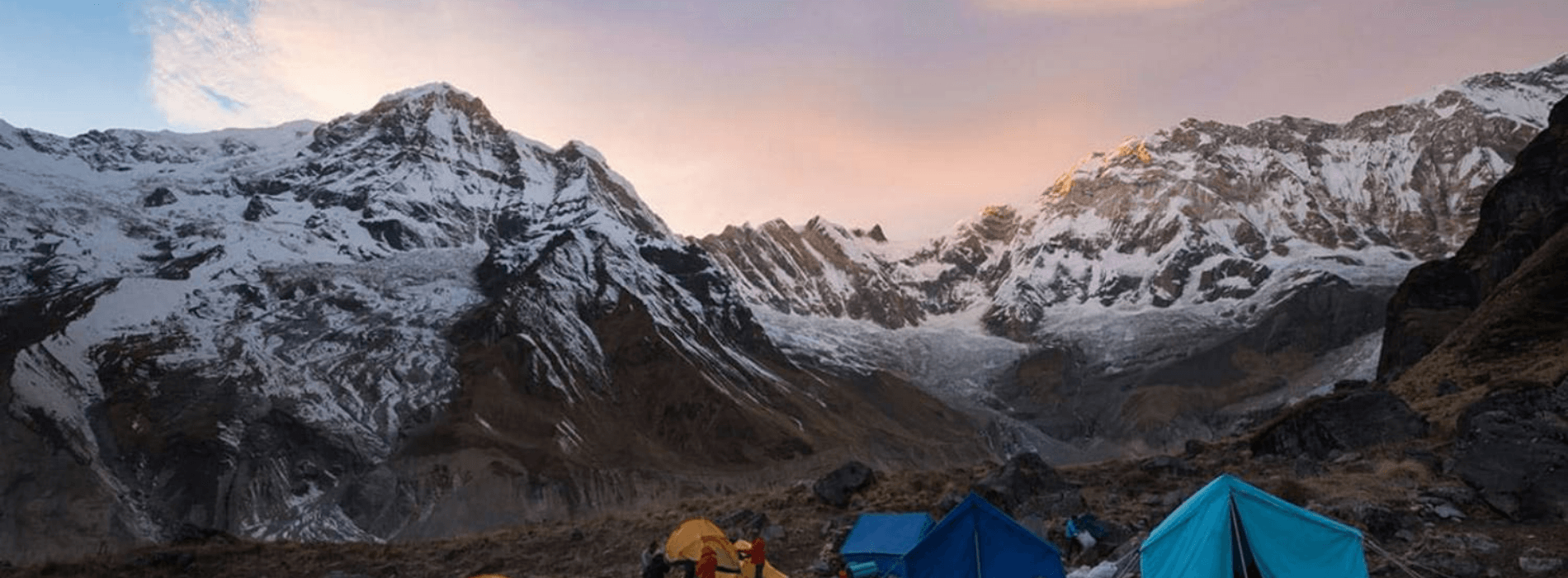
ANNAPURNA BASE CAMP TREK 6 DAYS
The 6 days Annapurna Base Camp Trek is an ideal adventure for those people who have a tight schedule but still want to experience the amazing landscape and the fascinating lifestyles of the Gurung cul...
The Role of Altitude in Trekking Difficulty
Altitude is one of the most significant factors influencing the difficulty of the Annapurna Base Camp trek. At higher elevations, the air contains less oxygen, which affects breathing and energy levels. The base camp itself lies at about 4,130 meters, where altitude sickness symptoms like headaches, nausea, dizziness, and fatigue can occur. To safely manage altitude, trekkers must follow acclimatization protocols, including ascending gradually and incorporating rest days to allow the body to adjust. Drinking plenty of water, avoiding alcohol, and eating a balanced diet also aid acclimatization. Understanding and recognizing symptoms of Acute Mountain Sickness (AMS) is crucial; severe cases require immediate descent. Trekking with an experienced guide familiar with altitude sickness management improves safety. Slow, steady progress combined with proper acclimatization strategies minimizes health risks and makes the trek more manageable. Altitude adds a unique challenge to the Annapurna Base Camp trek, demanding both physical and mental preparation.
Weather Impact on Annapurna Base Camp Trek Difficulty
Weather conditions dramatically affect the difficulty of the Annapurna Base Camp trek. The region experiences distinct seasons, each influencing trail conditions and safety. The most popular trekking seasons are spring (March to May) and autumn (September to November), when the weather is stable, temperatures are moderate, and skies are clear. These seasons offer the best visibility of the towering Annapurna massif and comfortable trekking conditions. The monsoon season (June to August) brings heavy rain, slippery trails, leeches, and potential landslides, greatly increasing difficulty and safety risks. Winter months (December to February) can be very cold, with snow and icy trails at higher elevations, requiring additional gear and trekking experience. Sudden weather changes, such as fog or hailstorms, are common at high altitudes and can reduce visibility and trail safety. Proper weather-appropriate clothing, waterproof gear, and flexible itinerary planning help trekkers handle these challenges. Staying updated on weather forecasts is essential for a safe and enjoyable trek.
Mental Strength and Endurance During the Trek
The Annapurna Base Camp trek tests not only physical stamina but also mental strength. Trekking for several hours a day in remote mountainous terrain, often with basic accommodations and limited connectivity, requires patience and resilience. Mental endurance helps trekkers overcome fatigue, discomfort, and unexpected obstacles such as weather changes or trail difficulties. Maintaining a positive mindset is essential to staying motivated during long climbs and challenging conditions. Many trekkers find that focusing on daily goals, embracing local culture, and appreciating the stunning natural beauty help sustain mental energy. Social support from fellow trekkers and guides can boost morale. Mental preparation before the trek, including visualization and stress management techniques, enhances endurance. The psychological challenge is part of what makes the Annapurna Base Camp trek a deeply rewarding adventure, contributing to personal growth and a strong sense of accomplishment upon reaching the base camp.
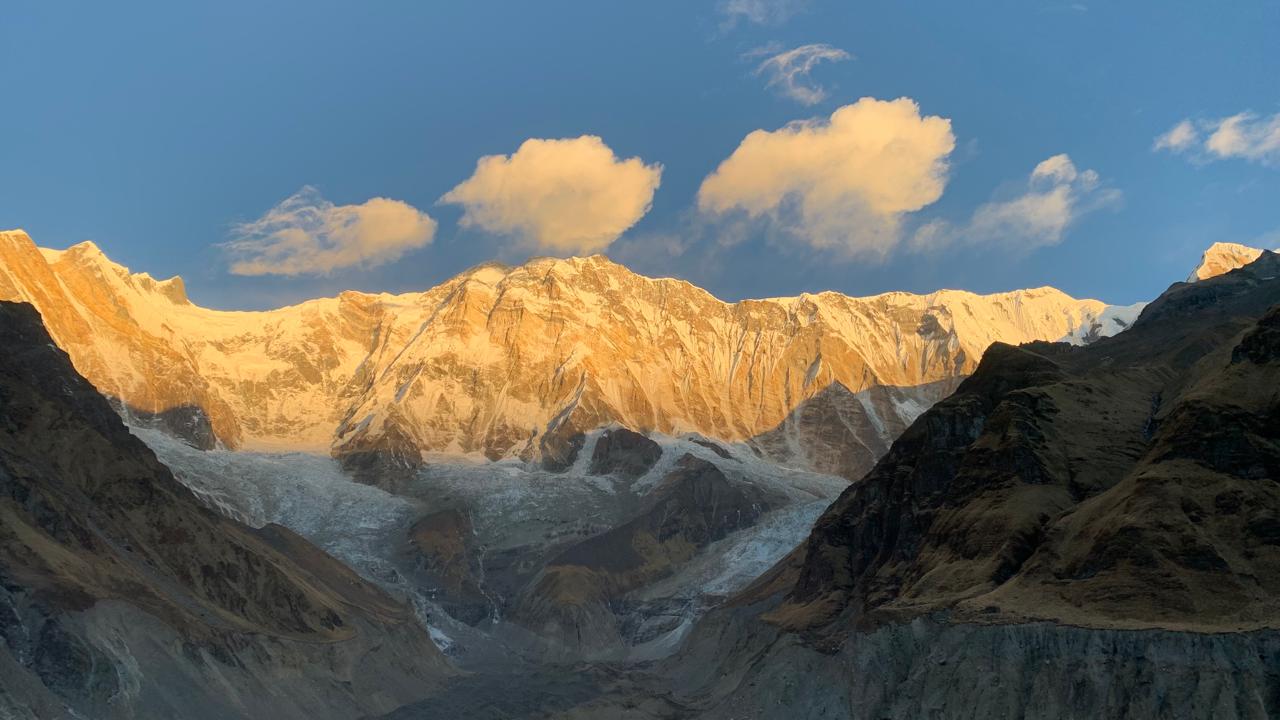
8 DAYS ANNAPURNA BASE CAMP TREK
The 8-day Annapurna Base Camp Trek is an ideal choice for trekkers with limited time but a desire to experience the awe-inspiring beauty of the Annapurna region. Designed to provide a comprehensive Hi...
Trail Conditions and Terrain Challenges
The Annapurna Base Camp trek features diverse trail conditions and terrain, contributing to its moderate difficulty. Trekkers navigate through subtropical forests, rhododendron-lined paths, rocky trails, and steep ascents. Some sections of the trail are narrow and uneven, demanding careful footing and balance. During the monsoon season, trails become muddy and slippery, increasing the risk of falls. Trekking poles can provide extra stability on tricky terrain and help reduce strain on the knees during descents. Villages and tea houses along the route offer rest points but are often basic, requiring adaptability. Wearing sturdy, waterproof hiking boots with good ankle support is essential for protection and comfort. The gradual changes in terrain keep the trek engaging but require preparation and awareness. Understanding the trail conditions before the journey allows trekkers to pack the right gear and mentally prepare for the challenges ahead.
Acclimatization Strategies for a Safer Trek
Proper acclimatization is vital for a safe and successful Annapurna Base Camp trek. The body needs time to adjust to the decreasing oxygen levels as altitude increases. Trek itineraries usually include rest days at strategic points like Chomrong or Bamboo, which allow the body to acclimate. Ascending slowly, avoiding rapid elevation gains, is the most effective way to prevent altitude sickness. Staying well-hydrated and consuming nutritious meals also support the body’s adaptation process. Trekkers should pay close attention to symptoms such as headaches, nausea, and dizziness, which signal altitude sickness. If symptoms worsen, descending immediately is crucial. Traveling with experienced guides who monitor health and adjust pace or plans as needed enhances safety. Acclimatization reduces risks, improves comfort, and increases the likelihood of reaching Annapurna Base Camp successfully.
Essential Gear to Manage Trek Difficulty
Having the right gear significantly eases the challenges of the Annapurna Base Camp trek. Durable hiking boots with good traction protect against rocky and slippery trails. Layered clothing allows adaptation to temperature fluctuations, from warm days to cold nights. Waterproof jackets and pants shield from rain and wind. Trekking poles provide stability and reduce impact on joints. A sturdy backpack witha rain cover carries essentials comfortably. Other necessary items include a high-quality sleeping bag rated for cold temperatures, a headlamp, sunglasses, sunscreen, and reusable water bottles. Proper gear ensures comfort, safety, and efficiency during the trek, reducing fatigue and helping trekkers focus on enjoying the journey. Investing in reliable equipment is essential to tackle the trek’s moderate difficulty and variable conditions.
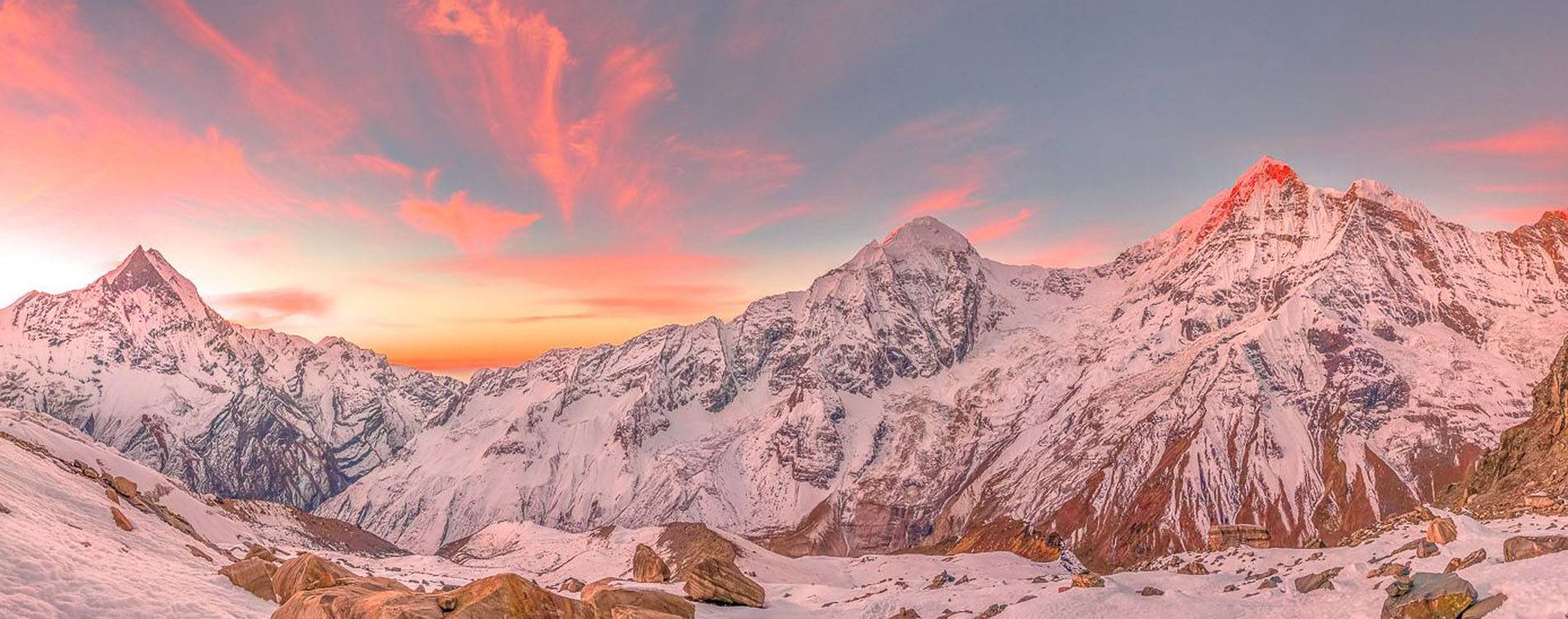
7 DAYS ANNAPURNA BASE CAMP TREK
Short on time – big on beauty!The 7 days Annapurna Base Camp Trek takes you to all the major attractions – but in less time than other treks to the Annapurna region. Take in the spectacular soaring sn...
Nutrition and Hydration for Optimal Performance
Nutrition and hydration play critical roles in coping with the physical demands of the Annapurna Base Camp trek. Trekking burns significant calories daily, so consuming a balanced diet rich in carbohydrates, proteins, and fats sustains energy levels. Local meals like dal bhat (rice and lentils) provide a healthy, nourishing option. Eating small, frequent meals and snacks like nuts, energy bars, and fruits keeps blood sugar steady during long hiking days. Hydration is equally important; high altitude increases water loss, and dehydration can worsen altitude sickness symptoms. Drinking at least 3 liters of water daily is recommended, alongside electrolyte-rich fluids. Avoiding excessive caffeine and alcohol supports hydration and recovery. Good nutrition and hydration optimize endurance, reduce fatigue, and help trekkers maintain focus and strength throughout the trek.
Safety Measures and Emergency Preparedness
Safety is paramount on the Annapurna Base Camp trek due to altitude, weather, and trail challenges. Trekkers should carry a basic first aid kit with medication for common ailments, blister care, and altitude sickness. Knowing how to recognize altitude sickness symptoms and when to descend is critical. Carrying a mobile phone with local SIM or satellite communication ensures connectivity in emergencies. Traveling with experienced guides improves safety through expert navigation and health monitoring. Weather conditions can change rapidly, so appropriate clothing and flexible plans are necessary. Informing family or friends of your itinerary and checking in regularly adds security. Emergency evacuation procedures, such as helicopter rescue, are available but expensive, so prevention is better than a cure. Being prepared and cautious ensures a safe and enjoyable trekking experience.
How difficult is the Annapurna Base Camp trek for beginners?
The Annapurna Base Camp trek is generally considered a moderate-level trek, making it accessible for beginners with reasonable fitness and preparation. While it does not require technical climbing skills, trekkers should be ready to walk 5 to 7 hours daily on varied terrain, including steep ascents, descents, and rocky paths. The altitude, which rises to about 4,130 meters, is a significant factor contributing to the difficulty. Beginners may find the reduced oxygen levels challenging, especially without proper acclimatization. To prepare, newcomers should engage in regular cardiovascular and strength training several months before the trek. Mental stamina is equally important to manage long trekking days and changing weather conditions. Walking poles, proper hiking boots, and layered clothing help mitigate physical challenges. Overall, with good preparation and pacing, beginners can successfully complete the Annapurna Base Camp trek and enjoy the stunning landscapes safely.

ANNAPURNA BASE CAMP TREK
The Annapurna Base Camp (ABC) Trek via Ghorepani Poon Hill Trek offers a truly unforgettable Himalayan adventure, combining stunning panoramic views with the rich cultural tapestry of the region. This...
What fitness level is required for the Annapurna Base Camp trek?
A moderate level of physical fitness is recommended for the Annapurna Base Camp trek. Trekkers should have good cardiovascular endurance and leg strength to manage daily hikes of 10 to 15 kilometers over uneven, sometimes steep terrain. It is advisable to train by doing aerobic activities such as running, cycling, or swimming, combined with strength training focusing on the lower body and core muscles. Hiking practice with a weighted backpack simulates real trek conditions and improves stamina. Flexibility and balance exercises are also beneficial to prevent injuries. While prior trekking experience helps, it is not mandatory. Additionally, the ability to acclimate well at high altitude is crucial, which depends on health and fitness. Being physically prepared reduces fatigue, lowers injury risk, and enhances the overall trekking experience.
How long does it take to complete the Annapurna Base Camp trek?
The typical Annapurna Base Camp trek itinerary lasts between 7 to 12 days, depending on pace and acclimatization needs. Most trekkers complete the round trip in about 8 to 10 days, covering 110-130 kilometers. The trek starts from Nayapul or Pokhara, passing through scenic villages such as Ghorepani, Chomrong, and Bamboo before reaching the base camp. Acclimatization days are included to reduce altitude sickness risk and allow trekkers to adjust to oxygen changes. Walking times range from 5 to 7 hours daily, with breaks for meals and sightseeing. The trek’s length and difficulty require careful planning to balance progression and rest. Some travelers may extend the journey to explore surrounding trails or the nearby Annapurna Sanctuary areas. The overall time investment is worthwhile for experiencing breathtaking Himalayan landscapes and unique cultural encounters.
Is the Annapurna Base Camp trek suitable for elderly trekkers?
The Annapurna Base Camp trek can be suitable for elderly trekkers who maintain good health and physical fitness. Age alone is not a limiting factor; rather, cardiovascular health, joint condition, and endurance play bigger roles. Older trekkers should consult their healthcare provider before the journey and possibly undergo fitness assessments. The moderate difficulty and altitude challenges require steady pacing, sufficient rest, and attention to acclimatization. Using trekking poles and hiring porters or guides can reduce physical strain. Weather and trail conditions should be carefully considered, avoiding monsoon or harsh winter seasons. Many elderly adventurers successfully complete the trek by preparing adequately and listening to their bodies. Mental resilience and motivation also contribute to a positive experience. Overall, with proper precautions and support, elderly trekkers can enjoy this iconic Himalayan adventure safely.
What are the main challenges faced during the Annapurna Base Camp trek?
The Annapurna Base Camp trek presents several challenges that affect its difficulty. The primary challenge is altitude, with base camp sitting at over 4,000 meters. Altitude sickness symptoms like headache, nausea, and fatigue can slow or halt progress. Physical endurance is tested by long daily hikes on steep and uneven terrain. Weather unpredictability, especially during monsoon and winter, brings risks of landslides, slippery trails, and cold temperatures. Basic accommodation and limited amenities along the trail require mental adaptability. Proper acclimatization, hydration, and nutrition are essential to mitigate health risks. Navigating rocky, narrow paths demands attention and appropriate gear. Mental toughness helps trekkers cope with physical strain and unexpected obstacles. Preparation through fitness training, packing the right gear, and planning for rest days reduces the impact of these challenges, ensuring a rewarding trek.
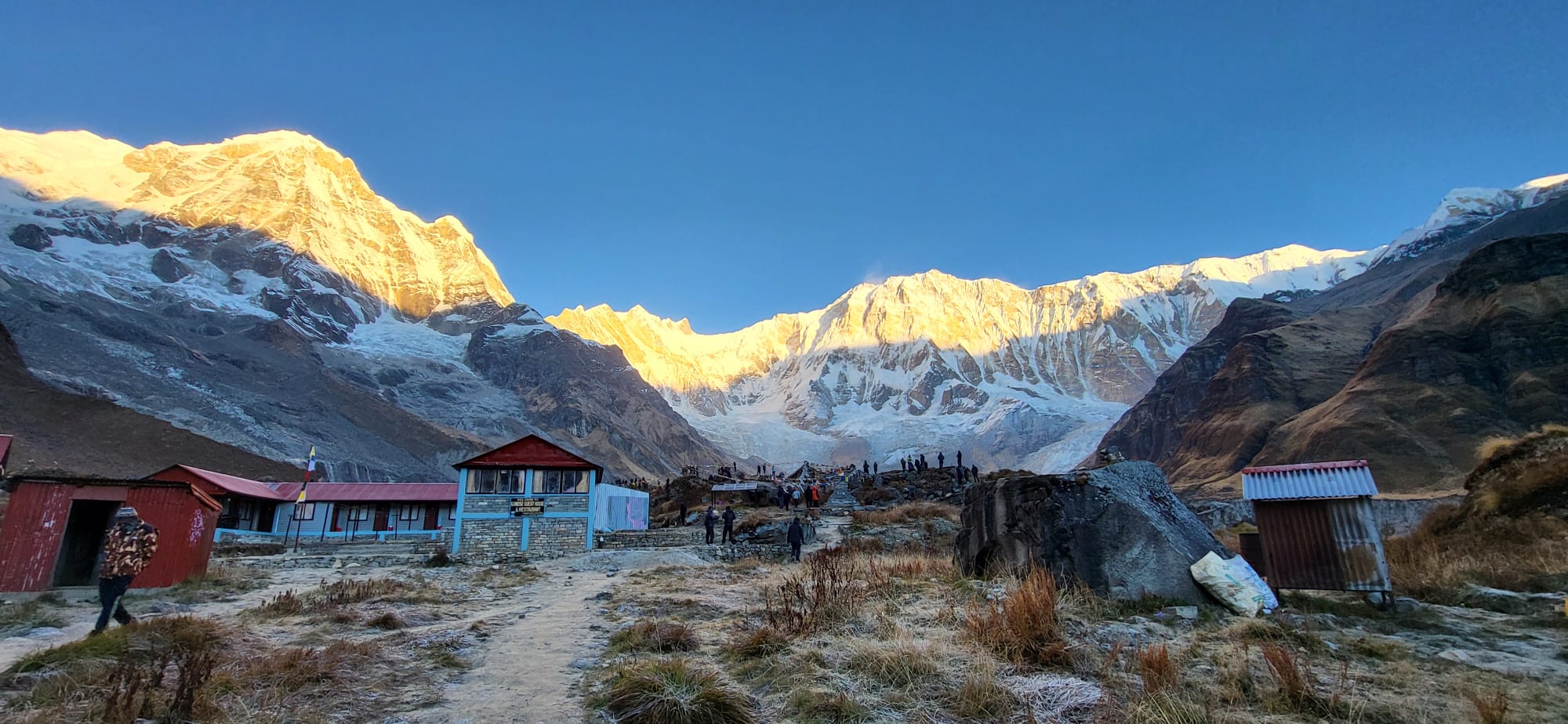
ANNAPURNA BASE CAMP TREK 7 DAYS
The Annapurna Base Camp Trek (ABC) is one of Nepal’s most iconic trekking routes, renowned for its breathtaking views of the Annapurna mountain range, diverse landscapes, and rich cultural experiences...
How can I prevent altitude sickness on the Annapurna Base Camp trek?
Altitude sickness is one of the biggest challenges on the Annapurna Base Camp trek, caused by reduced oxygen levels at high elevations. To prevent it, gradual acclimatization is key. Trekkers should ascend slowly and avoid rapid elevation gains, incorporating rest days at intermediate stops like Chomrong or Bamboo. Staying well-hydrated helps the body adjust more easily, so drinking plenty of water daily is essential. Avoiding alcohol and smoking during the trek also supports acclimatization. Eating a balanced diet rich in carbohydrates provides energy for the body to cope with altitude stress. Trekkers should recognize early symptoms like headaches, nausea, dizziness, and fatigue. If symptoms worsen, immediate descent to lower altitudes is crucial. Using medications such as acetazolamide (Diamox) can help, but only after consulting a healthcare professional. Traveling with experienced guides who monitor trekkers’ health and pace the group appropriately enhances safety. With proper preparation and vigilance, altitude sickness can be managed effectively, making the trek safer and more enjoyable.
What is the best time of year to trek to Annapurna Base Camp?
The best time to trek to Annapurna Base Camp is during the spring (March to May) and autumn (September to November) seasons. These months offer the most stable weather, clear skies, and comfortable temperatures, providing spectacular mountain views and pleasant trekking conditions. Spring is particularly famous for blooming rhododendrons and vibrant landscapes. Autumn boasts dry weather and excellent visibility, ideal for photography. The monsoon season (June to August) is generally avoided due to heavy rainfall, slippery trails, leeches, and increased risk of landslides, making trekking dangerous. Winter (December to February) brings cold temperatures, possible snow on high passes, and fewer facilities open along the route, which adds to the difficulty. Choosing the right season improves safety, comfort, and overall trekking experience. Booking in peak seasons requires advance planning due to high demand, while off-season trekking can offer solitude but more challenging conditions.
How important is hiring a guide for the Annapurna Base Camp trek?
Hiring a guide for the Annapurna Base Camp trek is highly recommended, especially for first-time trekkers or those unfamiliar with Himalayan terrain. Guides provide valuable local knowledge, help with navigation, and offer safety support throughout the trek. They assist in acclimatization management by pacing the group properly and recognizing signs of altitude sickness early. Guides also facilitate communication with locals and help arrange accommodations and meals, reducing logistical stress. In emergencies, they coordinate rescue or evacuation efforts efficiently. Additionally, hiring a guide contributes to the local economy and promotes responsible tourism. For trekkers concerned about language barriers or safety, guides provide peace of mind and enhance the overall experience. While independent trekking is possible, a guide’s expertise significantly improves safety and enjoyment on this moderately difficult trail.
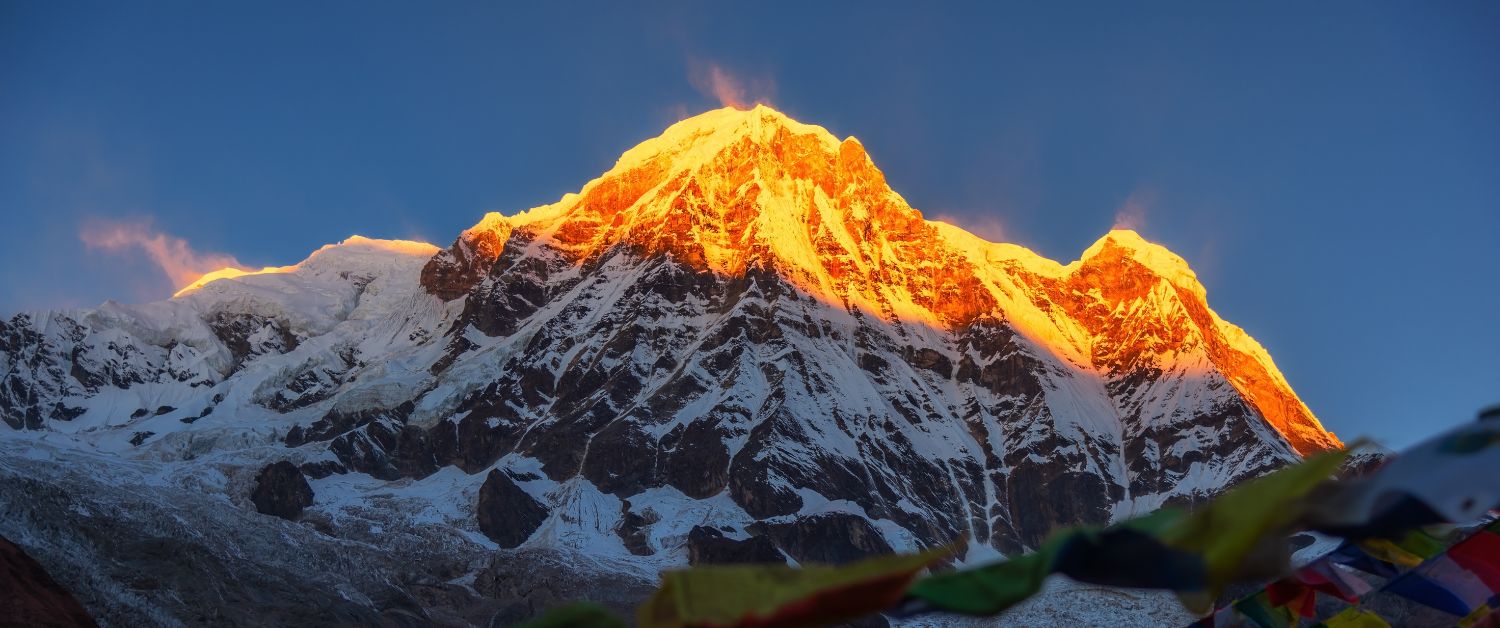
9 DAYS ANNAPURNA BASE CAMP TREK
The 9-day Annapurna Base Camp Trek is an ideal choice for trekkers seeking to experience the stunning beauty of the Annapurna region without committing to an extended trek. This journey takes you thro...
Can I complete the Annapurna Base Camp trek without prior trekking experience?
Yes, many people complete the Annapurna Base Camp trek without prior trekking experience, but it requires adequate physical preparation and mental readiness. The trail is well-marked and supported by tea houses and lodges, making navigation manageable even for beginners. However, the trek’s moderate difficulty, altitude challenges, and long daily hikes mean that good fitness and endurance are essential. Beginners should train with aerobic exercises, strength building, and hiking practice months before the trek. Learning about altitude sickness and proper acclimatization strategies is crucial to avoid health issues. Traveling with a guide or trekking company can enhance safety and provide support for inexperienced trekkers. Pacing yourself, listening to your body, and having flexible plans increase the chances of success. With commitment and preparation, beginners can enjoy this iconic trek and its stunning Himalayan views.
What is the total distance and elevation gain of the Annapurna Base Camp trek?
The Annapurna Base Camp trek covers approximately 110 to 130 kilometers round trip, depending on the chosen starting point. Most treks start from Nayapul or Pokhara, winding through scenic villages and diverse landscapes. The elevation gain is significant, with the base camp located at about 4,130 meters above sea level. Trekkers gradually ascend from lowland forests at around 1,000 meters, experiencing an elevation gain of over 3,000 meters. Daily hikes involve continuous uphill and downhill sections, which require stamina and endurance. The terrain varies from dirt trails and rocky paths to suspension bridges and forested sections. Elevation gain combined with long hiking hours contributes to the trek’s moderate difficulty level. Understanding the distance and elevation profile helps trekkers plan training, pacing, and acclimatization effectively for a safer and more enjoyable experience.
Any Questions? Let Us Know.
Recent Posts
17th June, 2025


















